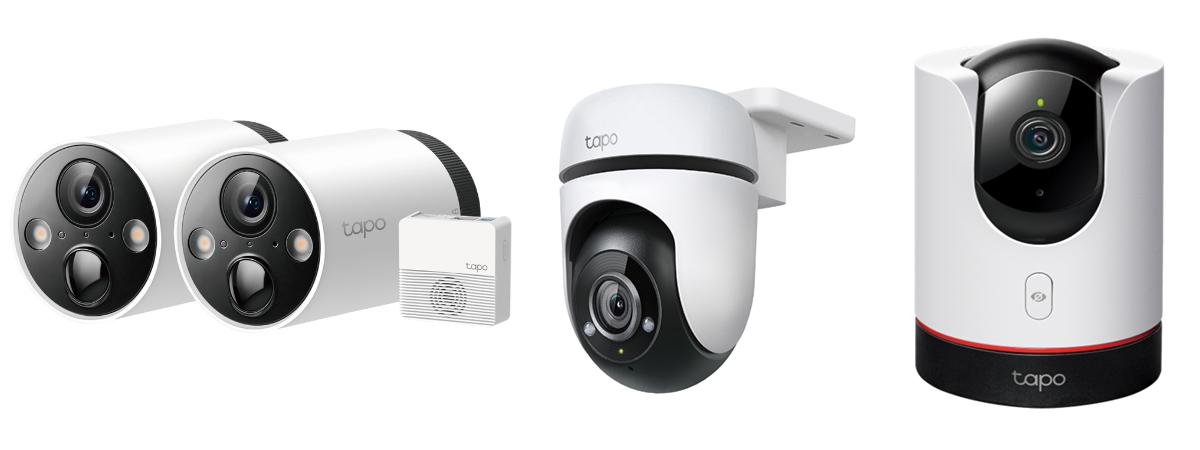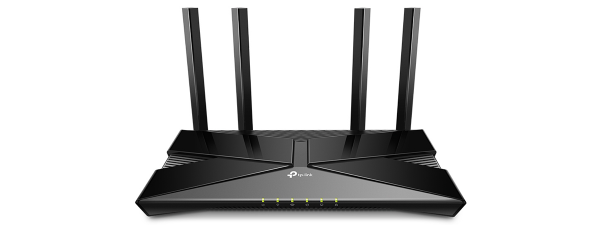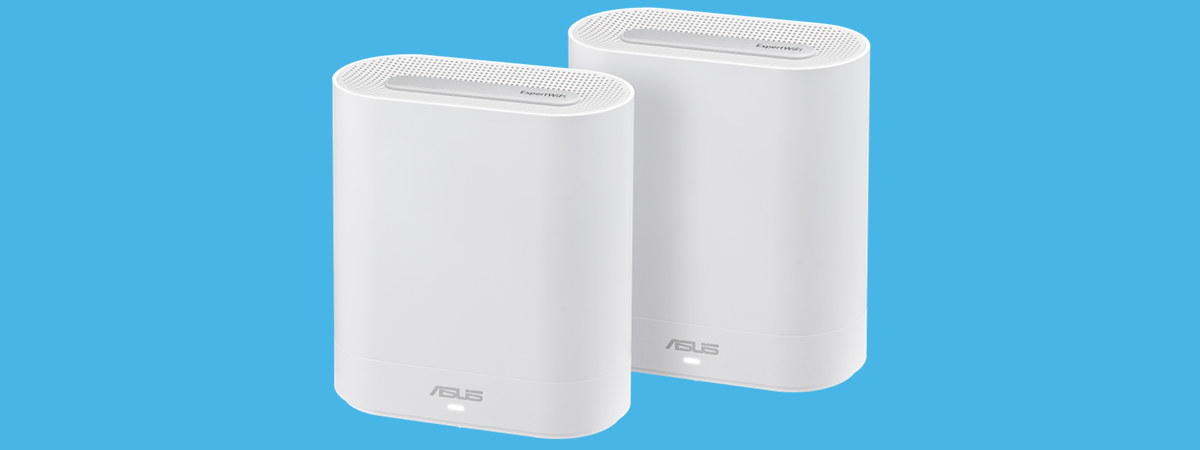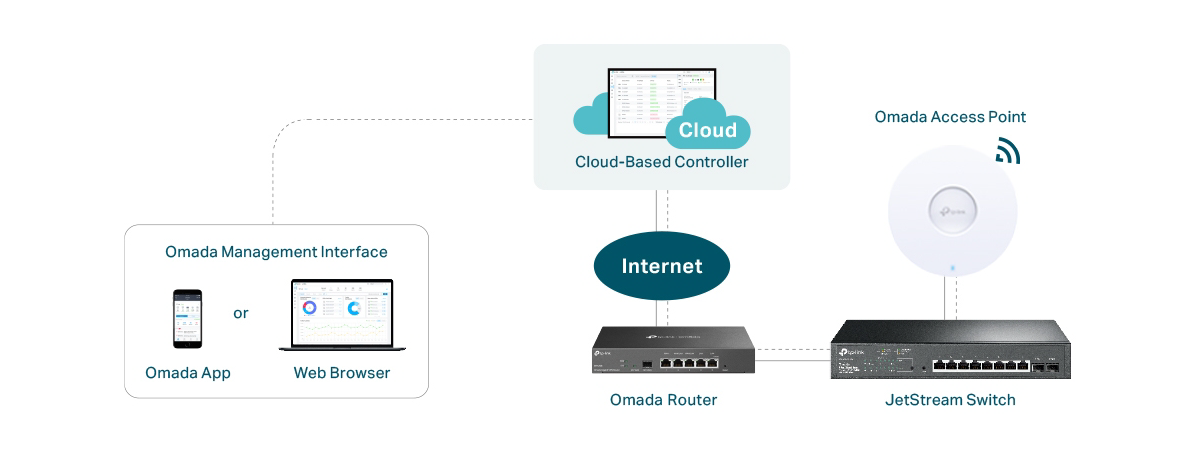
Our team is very familiar with the TP-Link ecosystem for home users, and we like to believe that our readers keep our reviews in mind when making their purchasing decisions. Recently, TP-Link has asked us to “meet” their Omada family of products, aimed at small and medium businesses. We’re talking about professional networking equipment that can handle larger and more complex networks than those found in our homes and apartments. We decided to accept their challenge, so today, we’ll introduce you to TP-Link Omada:
The TP-Link Omada ecosystem and its target audience
Omada is one of TP-Link’s series of products designed for small and medium-sized businesses. The Omada family includes network controllers (hardware, software, or cloud-based), switches, routers, as well as access points, both indoors and outdoors. To get acquainted with the Omada family of products, TP-Link has sent us for testing the following:
- TP-Link Omada VPN Gigabit Router ER605
- JetStream 8-Port Gigabit Smart Switch TL-SG2008P
- TP-Link Omada EAP660 HD Wi-Fi 6 Ceiling Mount Access Point
- TP-Link Omada EAP225 Indoor/Outdoor Access Point
- Omada Hardware Controller OC200
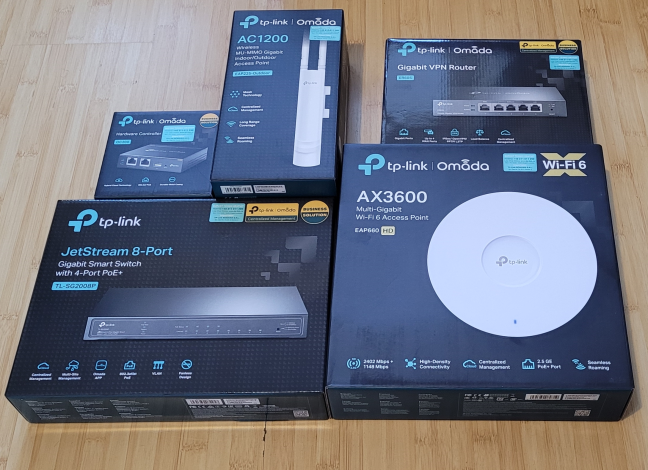
The TP-Link Omada equipment that we have tested
The TP-Link Omada equipment comes with a standard warranty of 5 years, and it tries to cater to the needs of the following types of customers:
- Businesses running in the hospitality sector such as hotels, restaurant chains, coffee shops, or leisure centers
- Chains of pharmacies and medical centers
- The education sector (universities, high schools, etc)
- Companies that are based in high-density office buildings with lots of Wi-Fi interference
Let’s take each piece of equipment one by and see what it has to offer:
TP-Link Omada VPN Gigabit Router ER605
The TP-Link Omada ER605 (TL-R605) router is a model for small and medium-sized businesses. In addition to the typical functions of a business router, it can also function as a VPN server, serving up to 20 simultaneous VPN connections, using the L2TP, PPTP, IPsec, and OpenVPN protocols.
In the package, we find the router, a network cable, the power supply, plastic feet you can attach to the router, the installation guide, and a few other leaflets.
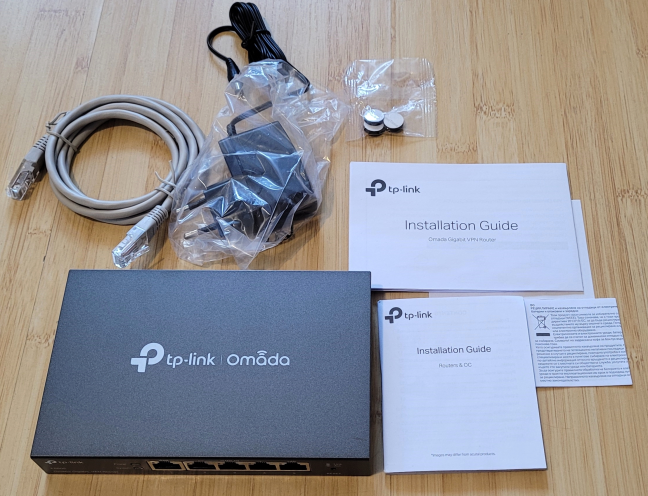
Unboxing the TP-Link Omada ER605
The router has five Ethernet ports working at 1 Gbps, four of which can be used as WAN for the internet connection when you need load balancing or higher bandwidth for a large number of access points and network devices. The Omada ER605 router’s sturdy metal housing and utilitarian design make it easy to install anywhere, even in small spaces.
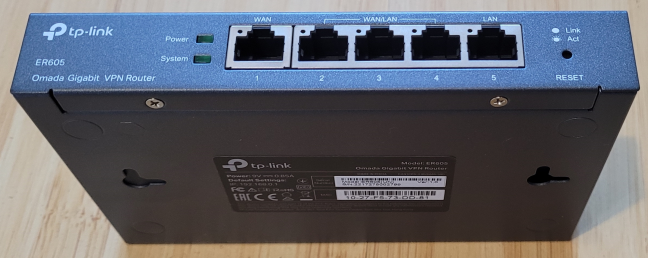
The ports found on the TP-Link Omada ER605
This router has 128 MB of RAM and 16 MB of storage space for the firmware, and it works at temperatures varying from 0 to 40 ℃ (or 32–104 ℉). It can be installed and managed independently but also through a controller (the ideal scenario, as you’ll understand later in this article). For more information about the characteristics of this router, visit this page: Omada Gigabit VPN Router ER605.
JetStream 8-Port Gigabit Smart Switch TL-SG2008P
TP-Link JetStream TL-SG2008P is a network switch with eight ports working at 1 Gbps, four of which have PoE (Power over Ethernet). This means that they transmit electricity too, and they have a total power supply of 62 W.

The ports on the TP-Link JetStream TL-SG2008
PoE is useful for powering the equipment connected to the switch, such as controllers, surveillance cameras, or access points. JetStream TL-SG2008P is integrated with all Omada controllers (both hardware and software), so it can be easily managed. It has a durable metal case and a very functional design.
In its box, in addition to the actual switch, you’ll also find the power supply, the installation manual, a couple of plastic feet which can be glued to the switch, and some informative leaflets.
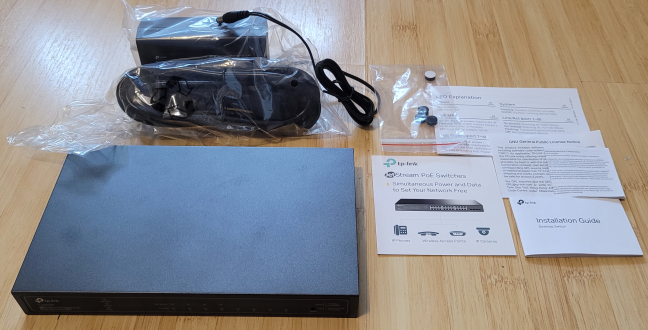
Unboxing the TP-Link JetStream TL-SG2008
For more details, visit this page: JetStream 8-Port Gigabit Smart Switch with 4-Port PoE+ TL-SG2008P.
Access point TP-Link Omada EAP660 HD
Omada EAP660 HD is a modern dual-band access point with Wi-Fi 6. If you want to know more about this standard and its benefits, read this analysis: Wi-Fi 6 vs. Wi-Fi 5 vs. Wi-Fi 4 on TP-Link routers. When you unbox it, you find the access point itself, its power supply, a kit with screws and other accessories for ceiling or wall mounting, the installation guide, and a couple of leaflets.
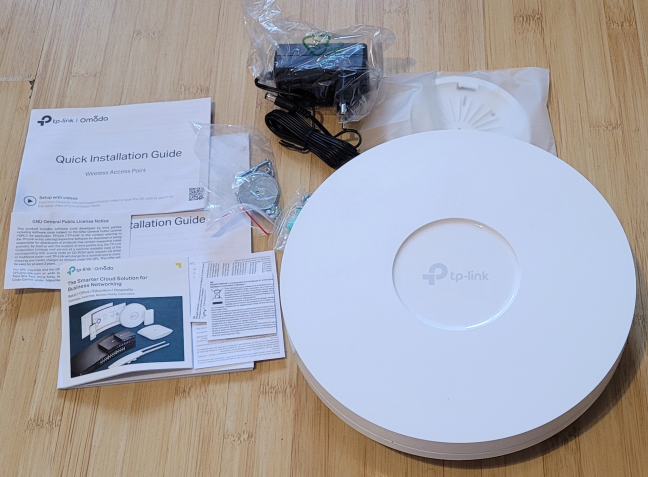
Unboxing the TP-Link Omada EAP660 HD
One aspect that we like a lot about the TP-Link Omada EAP660 HD is its powerful hardware: it has a Qualcomm IPQ8072A processor with four cores, running at 2 GHz, 512 MB RAM, and 128 MB of storage for the firmware. It can be connected to the network through a 2.5 Gbps port, and it offers wireless transmissions using 4x4 MU-MIMO. All these features make it a great choice when you want high-speed Wi-Fi for a large number of devices.
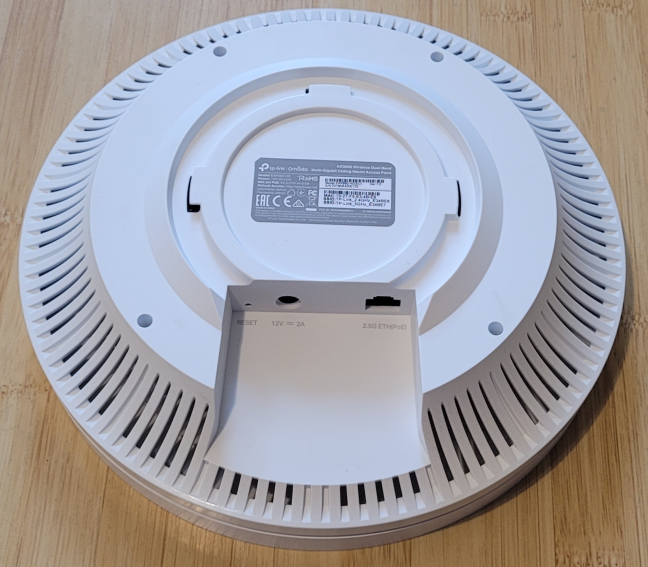
TP-Link Omada EAP660 HD
The maximum theoretical bandwidth is 1148 Mbps on the 2.4 GHz band (when using Wi-Fi 6) and 2402 Mbps on the 5 GHz band (through Wi-Fi 6). Businesses interested in maximizing their security can activate WPA3 encryption. The only limitation of TP-Link Omada EAP660 HD is that its maximum channel bandwidth on the 5 GHz band is 80 MHz, not 160 MHz.
For more technical information, refer to this page: AX3600 Wireless Dual Band Multi-Gigabit Ceiling Mount Access Point.
Access point TP-Link Omada EAP225-Outdoor
TP-Link Omada EAP225-Outdoor is a dual-band access point, with detachable antennas, that runs using the Wi-Fi 5 standard. It’s specialized for use in outdoor spaces, such as terraces, sports fields, etc. In its packaging, you find the access point, its antennas, the power supply, a kit for mounting it on poles, walls, and other types of surfaces, a waterproof rubber insert, a passive PoE injector, the installation guide, and a few leaflets.
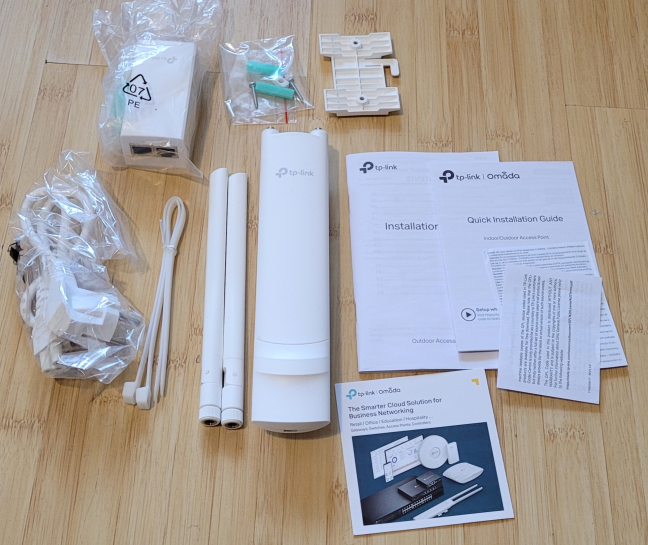
Unboxing the TP-Link Omada EAP225-Outdoor
The housing of the TP-Link Omada EAP225-Outdoor has an IP65 certification for resistance to dust, water splashes, and accidental jets. The access point also benefits from 6KV lightning protection and 15KV ESD electrostatic protection. Its operating temperatures can vary between -30 ℃ and 70 ℃ (or -22℉~158℉).

TP-Link Omada EAP225-Outdoor
Omada EAP225-Outdoor connects to the network via a 1 Gbps Ethernet port and it can be managed very easily with the help of a controller. The theoretical maximum bandwidth is 300 Mbps on the 2.4 GHz band and 867 Mbps on the 5 GHz band.
More technical information can be found on this page: AC1200 Wireless MU-MIMO Gigabit Indoor/Outdoor Access Point.
TP-Link Omada OC200 hardware controller
The hardware controller is the smallest and most important piece of equipment in our setup because its role is to facilitate the administration of the network and all devices from a central point. You can think of Omada OC200 as the brain that tells all other devices what to do and how to work on the network.
Its packaging is very small and includes the controller itself, a CAT.5e network cable, a few plastic feet that you can stick to it, the installation guide, and a few leaflets.
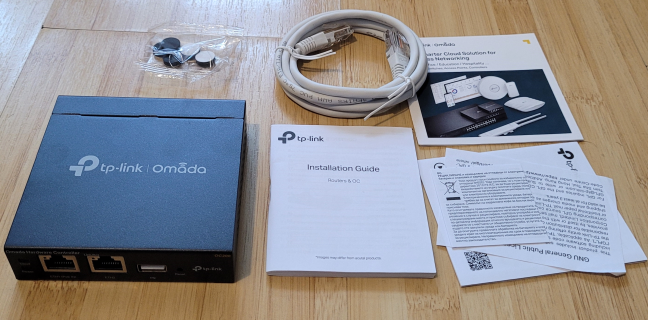
Unboxing the TP-Link Omada OC200
Omada OC200 must be connected to the network switch, and with its help, you can manage up to 100 access points, switches, and routers. It can be accessed both locally and from the cloud, through a web interface or the Omada mobile app for Android and iOS. The OC200 has a powerful chipset, a durable metal case, and a USB 2.0 port for automatic backup. On it, we find two Ethernet ports at 100 Mbps, and it can be powered through PoE (Power over Ethernet) or micro USB.
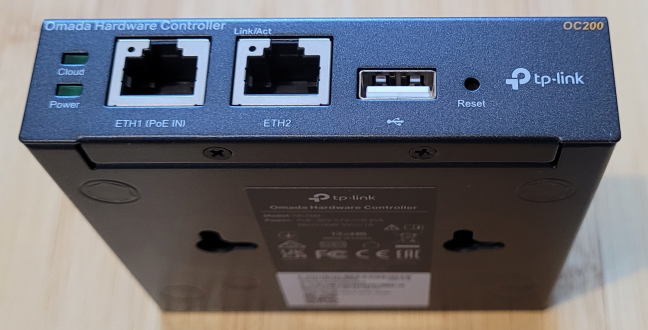
TP-Link Omada OC200
Just like the router, the controller can function at temperatures varying from 0 to 40 ℃ (32–104 ℉). For more technical details, visit this page: OC200 Omada Hardware Controller.
Companies that do not want to buy a hardware controller can also opt for a free Omada software controller, which can be installed on any PC with Windows or Linux.
Large companies can also opt for Omada Cloud-Based Controller - a controller located in a subscription-based cloud solution, which allows you to manage a virtually unlimited number of devices, located in a large number of locations.
Installing the equipment and setting up the network
If you’re not familiar with Wi-Fi equipment for business use, you may assume that installing the network starts with setting up the router, just as is the case with home networks. You can first configure the TP-Link Omada ER605, but that’s not the ideal approach. In the beginning, unpack all the equipment that will become part of your network and connect them like this:
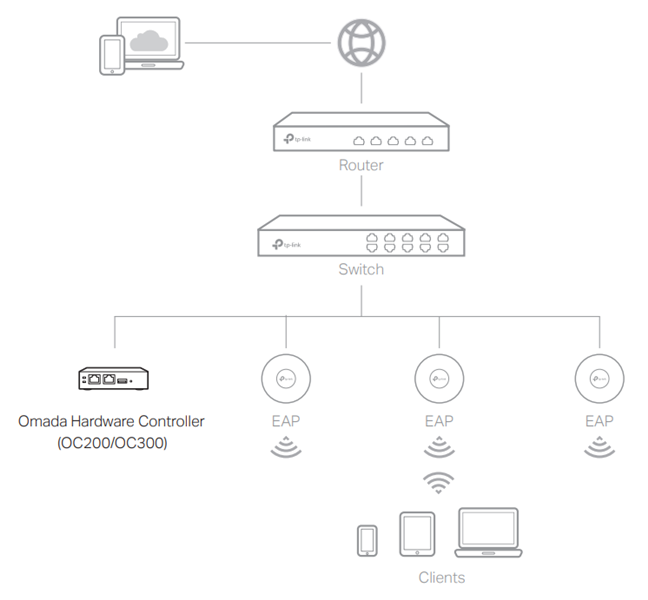
How to connect your network devices when using a hardware controller
Connect the router to the internet, then the switch to the router, and the hardware controller and your access points to the switch. Then, start them all, wait for them to finish the boot procedure, and light up all their lights. After that, connect a PC to the switch, fire up a web browser, and navigate to the controller’s IP address. If you don’t know it, you can use the Omada app, available for free both for Android and iOS. The app automatically detects the hardware controller and displays its IP address.

The TP-Link Omada app detects your controller automatically
You can also use the app to perform the initial setup. If you have to, connect it to the Wi-Fi broadcasted by a TP-Link Omada access point. However, for this setup process to work, you must only use equipment compatible with the Omada app. You can find a list of compatible devices here: Does my device support the Omada app?
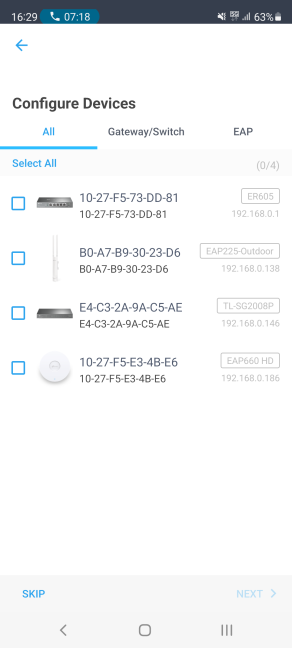
Choose which Omada devices will be set up
The setup wizard is friendly and easy to follow both in your web browser and in the mobile app. Even if you only have minimal technical knowledge, you shouldn’t have any issues setting up all the networking equipment. The steps you go through are the following: choose the initial settings for the controller, select the devices you want to configure, enter the settings for your internet connection, configure the Wi-Fi, and type the details of the admin account you want to use on the controller. In the end, you see the summary of your settings. After you confirm that you want to go ahead, your settings are applied. This step takes a few minutes until all the networking devices show up as “adopted” by the controller and receive all the settings they need from it.
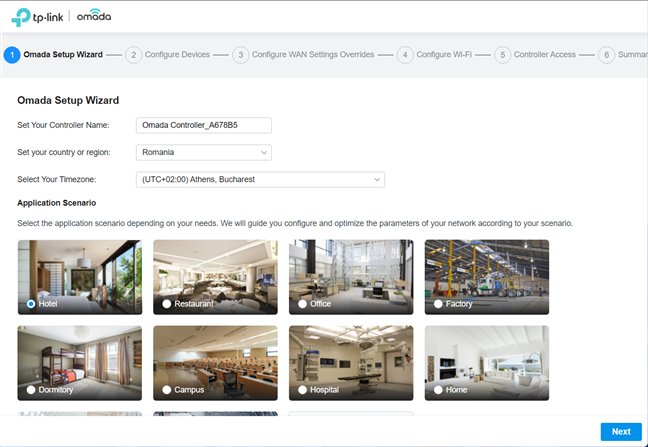
The setup wizard for TP-Link Omada OC200
As we mentioned earlier, you don’t have to buy a hardware controller. You can also use a software controller and install it for free on a PC that’s part of your network. This PC needs to be turned on at all times so that it can function as a controller. In this situation, your network should be set up like this:
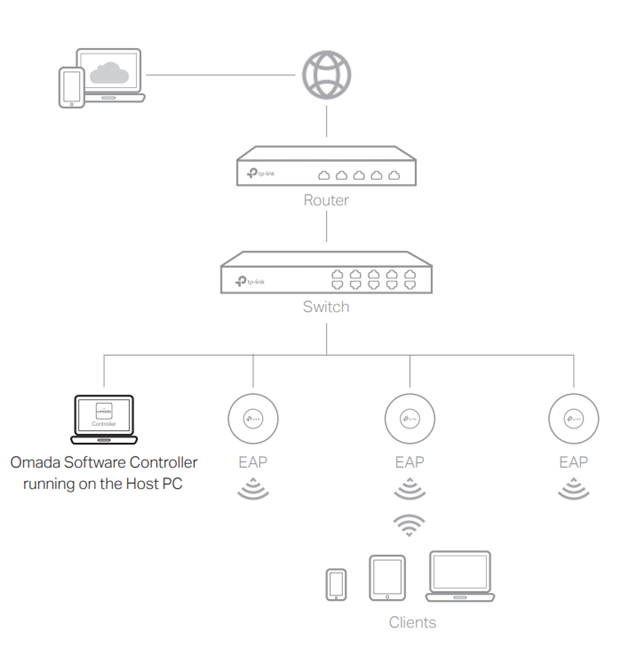
The network topology when using a software controller
All TP-Link Omada equipment uses a Zero-Touch approach, meaning that the discovery and installation process is fast and largely automated. You don’t need a costly team to install and configure the network. To make the installation process easier, the Omada networking devices can be preset before being sent to the client, so that they discover one another automatically. Also, TP-Link offers free technical support which can be accessed here: Network Deployment Advisor for Small and Midsize Business. Their tech support service can be contacted through phone, email, and live chat. They provide full support, starting with the acquisition process and ending with the installation at the customer’s location.
Managing the network and your TP-Link Omada equipment
When it comes to Wi-Fi routers for consumers, you only need to go through the initial quick setup wizard to have a functional network. However, when it comes to business solutions, this is not the case, and it is important that you access their administrative interface and delve into details. If you want to configure the TP-Link Omada equipment, open a web browser and navigate to omada.tplinkcloud.com or to the IP address of the controller. Connect using the admin details you’ve set earlier, and you get access to a portal that looks friendly and where you can see and manage all your network devices.
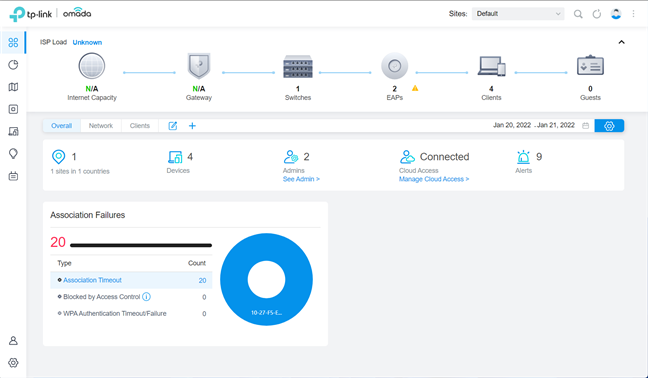
The admin user interface for TP-Link Omada
The available settings are many in number but they’re logically organized in categories that cater to the needs of a business. You can set anything you want, from activating the mesh Wi-Fi feature for access points, to configuring how the network can be accessed, the VPN server of your company, the firewall protection, or the firmware updates for each network device.
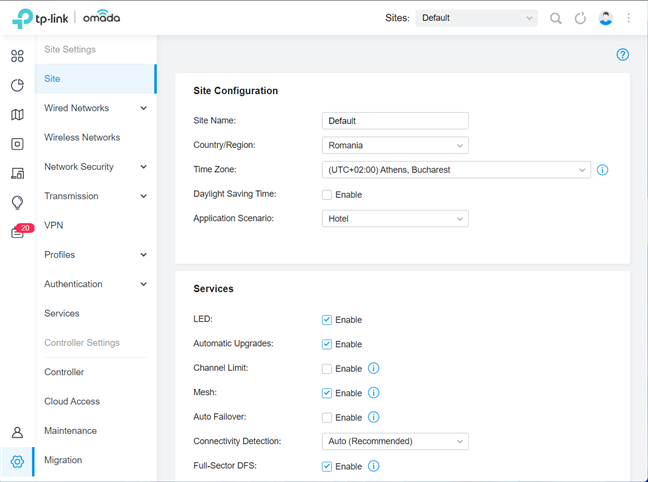
There are many settings available, all logically organized
Another positive is the help documentation: for each important setting, there’s an icon with the i letter next to it. Clicking on the i displays more details about that setting and what it does. The only downside is that the user interface for the controller seems to only be available in English.
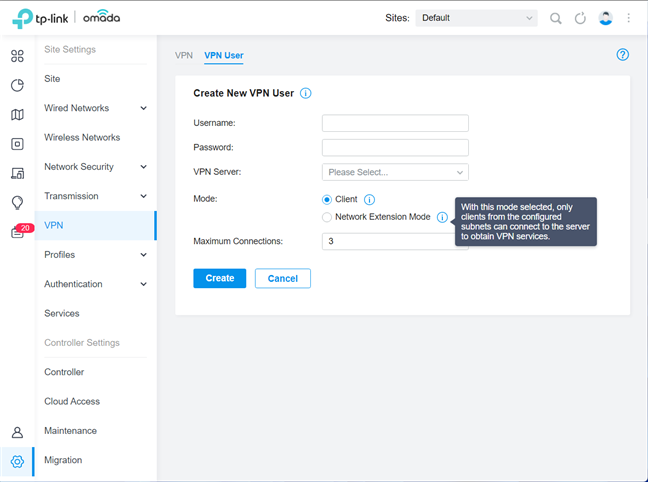
For more information click the i icon
For more flexibility, it is a good idea to connect your TP-Link Omada OC200 hardware controller to TP-Link’s cloud using a TP-Link ID. This step must be performed after finalizing the initial configuration of the network when your internet connection is working. Otherwise, the connection to the cloud won’t be performed successfully.
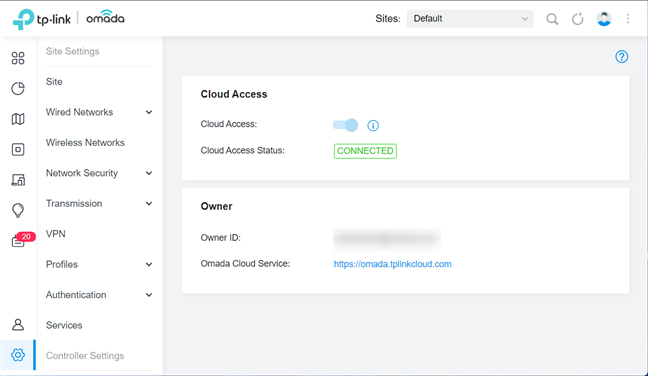
Connect your network to TP-Link's cloud
After you’ve created a link for external access, you can remotely control your network from anywhere, including your smartphone, when you are outside your company’s network, using the omada.tplinkclod.com cloud platform or the Omada mobile app for Android and iOS. The app is also friendly and easy to use. As long as your business network is not completely cut off from the internet, you can use the app to see what’s going on inside the network, which devices are connected, which networking equipment no longer works, etc. One useful feature of the app is that it displays automatic alerts for all kinds of events that may interest you.
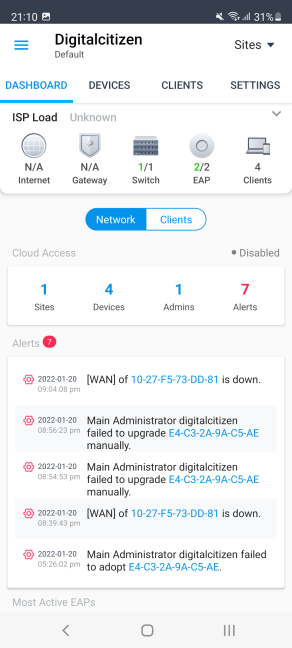
The TP-Link Omada mobile app
The settings offered by the TP-Link Omada app are not as comprehensive as those from the web interface, but they’re enough to cover the basic needs. You can see how they are organized in the screenshot below.
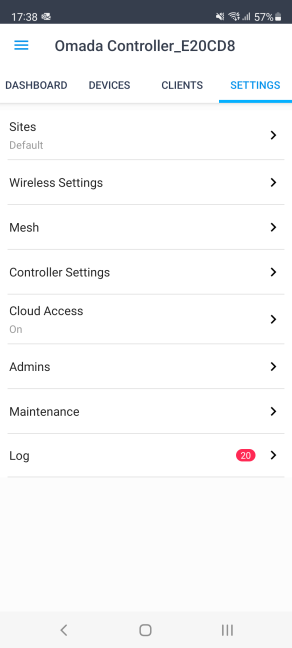
The settings available in TP-Link Omada
If the TP-Link Omada app isn’t useful enough to solve a specific problem, and you’re not connected to the company’s network, you can open a web browser and navigate to omada.tplinkcloud.com. With the help of your TP-Link ID, you can access and manage the whole network as if you’re connected locally.
How fast is the Wi-Fi offered by the TP-Link Omada access points?
The TP-Link Omada ER605 router and the JetStream TL-SG2008P switch don’t have any problems in offering Ethernet connections at speeds very close to 1 Gbps, so we didn’t perform any detailed test. Such network connections tend to work very well, and that’s why we chose to make some measurements using only the access points received for testing. Let’s see what they offer, one by one:
Access point TP-Link Omada EAP660 HD
First, we wanted to see the maximum speed you get from this access point with Wi-Fi 6. We took a smartphone that works with Wi-Fi 6 connections and ran SpeedTest on both frequencies: 2.4 GHz and 5 GHz. This app shows you the maximum speed we get when transferring data to and from the internet.
On the 5 GHz band, we reached a maximum download speed of 703 Mbps.
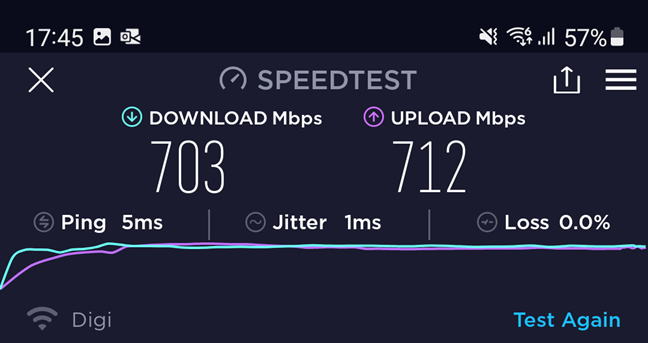
TP-Link Omada EAP660 HD - SpeedTest on the 5 GHz band
Then, we took a laptop and made a transfer through the local network using PassMark Performance test, an app that measures the average transfer speed and the transfer’s variability. As you can see below, the average speed was 816.7 MBps - quite satisfactory. The stability of the network transfer was relatively good, but we did notice a sudden drop halfway through our measurement.
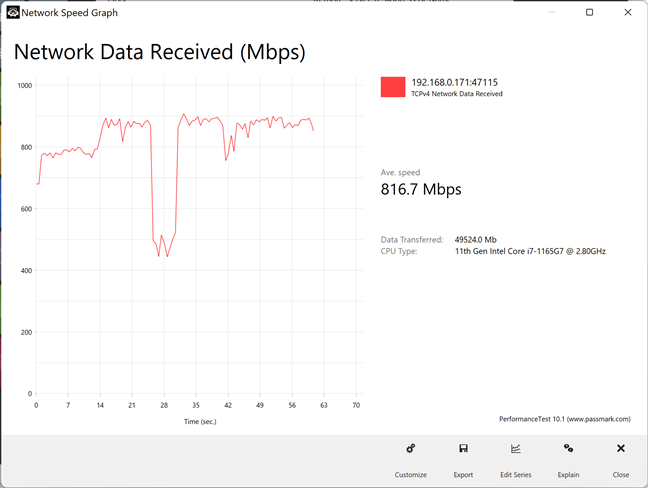
TP-Link Omada EAP660 HD - Wi-Fi transfers on the 5 GHz band
We moved on to the 2.4 GHz band and kept using the Wi-Fi 6 standard. In SpeedTest, our maximum download speed was 193 Mbps. Again, that’s quite fast for this wireless frequency.
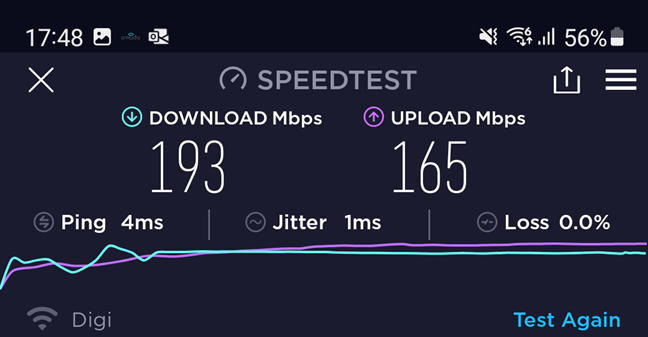
TP-Link Omada EAP660 HD - SpeedTest on the 2.4 GHz band
In PassMark Performance test, the wireless transfers had a slightly slower average speed, and their stability was within normal limits for the 2.4 GHz band.
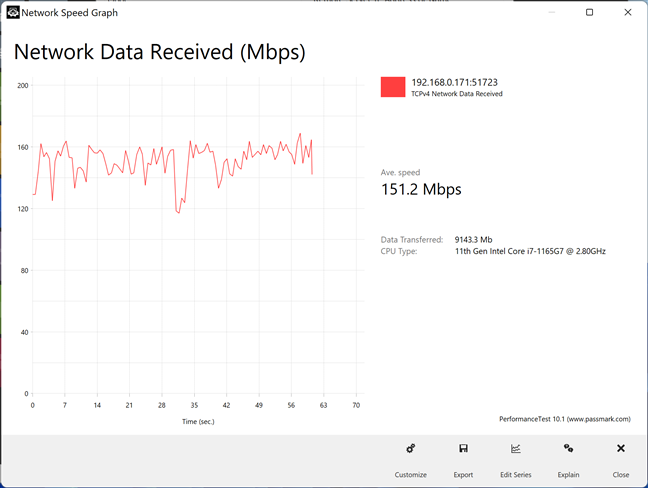
TP-Link Omada EAP660 HD - Wi-Fi transfers on the 2.4 GHz band
We are pleased with our testing experience for TP-Link Omada EAP660 HD. Our Wi-Fi 6 connections worked well, they were stable, and the seamless roaming feature ensured a smooth migration from one access point to another, depending on how we moved around the coverage area.
Access point TP-Link Omada EAP225-Outdoor
TP-Link Omada EAP225-Outdoor is an affordable access point that works using the older Wi-Fi 5 standard. Because of that, the speeds you get from it should be slightly lower.
First, we used SpeedTest on the 5 GHz band, using the Wi-Fi 5 standard to see the maximum speeds we get when transferring data to and from the internet. Our maximum download speed was 610 Mbps.
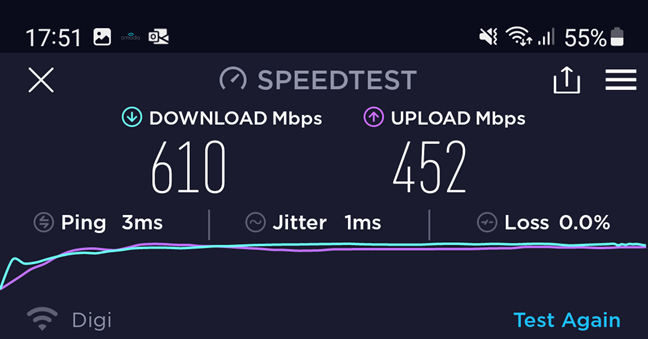
TP-Link Omada EAP225-Outdoor - SpeedTest on the 5 GHz band
PassMark Performance test showed us both the average network speed and the variability of network transfers. When transferring data through the local network, our average download speed was higher than in the previous test, and the transfer was very stable. An excellent result!
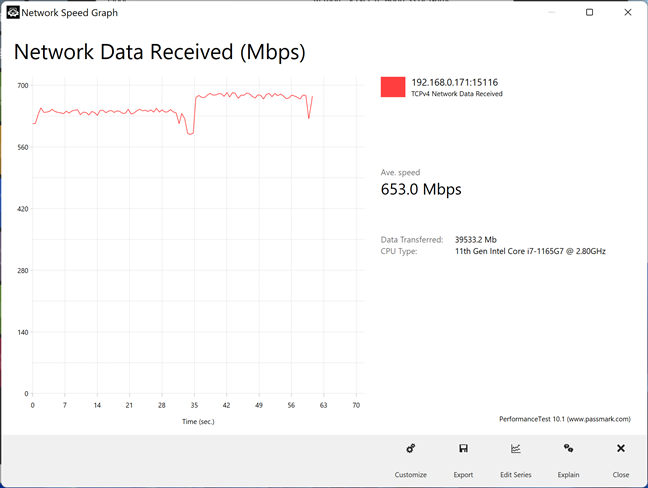
TP-Link Omada EAP225-Outdoor - Wi-Fi transfers on the 5 GHz band
We moved to the 2.4 GHz band, using the Wi-Fi 4 standard. Our maximum download speed from the internet, measured with SpeedTest, was 77.5 Mbps.
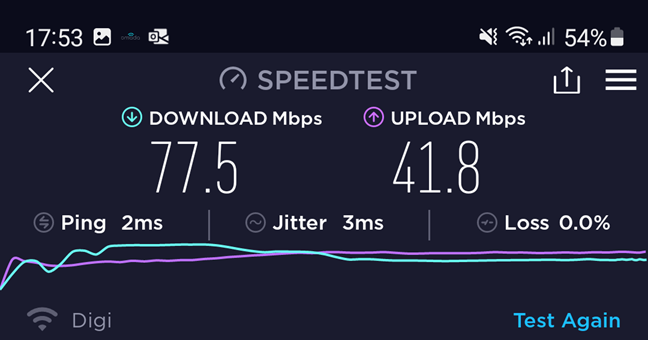
TP-Link Omada EAP225-Outdoor - SpeedTest on the 2.4 GHz band
Network transfers made through PassMark Performance test showed a higher average speed - 102.1 Mbps - and a high stability of the network throughput. Again, a solid result.
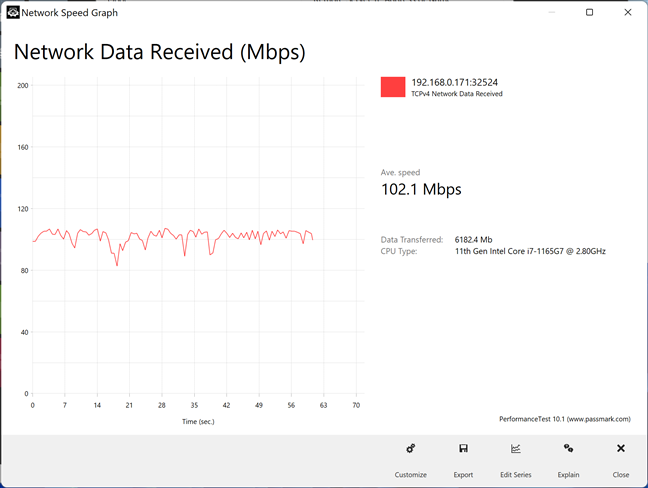
TP-Link Omada EAP225-Outdoor - Wi-Fi transfers through the 2.4 GHz band
Even though TP-Link Omada EAP225-Outdoor does not use the Wi-Fi 6 standard, the speeds you get from it are excellent, and network transfers are very stable. Also, the seamless roaming algorithms (which move one device from one access point to another, so that it always has the best Wi-Fi signal), work very well between Omada EAP225-Outdoor and Omada EAP660 HD, even though they use different Wi-Fi standards.
What’s your opinion about the TP-Link Omada?
Here ends our adventure with TP-Link Omada networking equipment for small and midsize businesses. We hope that you have enjoyed our presentation and that you’ve learned useful things about these products and their features. If you have any questions, or if you have used such networking equipment before, don’t hesitate to comment below.



 03.02.2022
03.02.2022 
